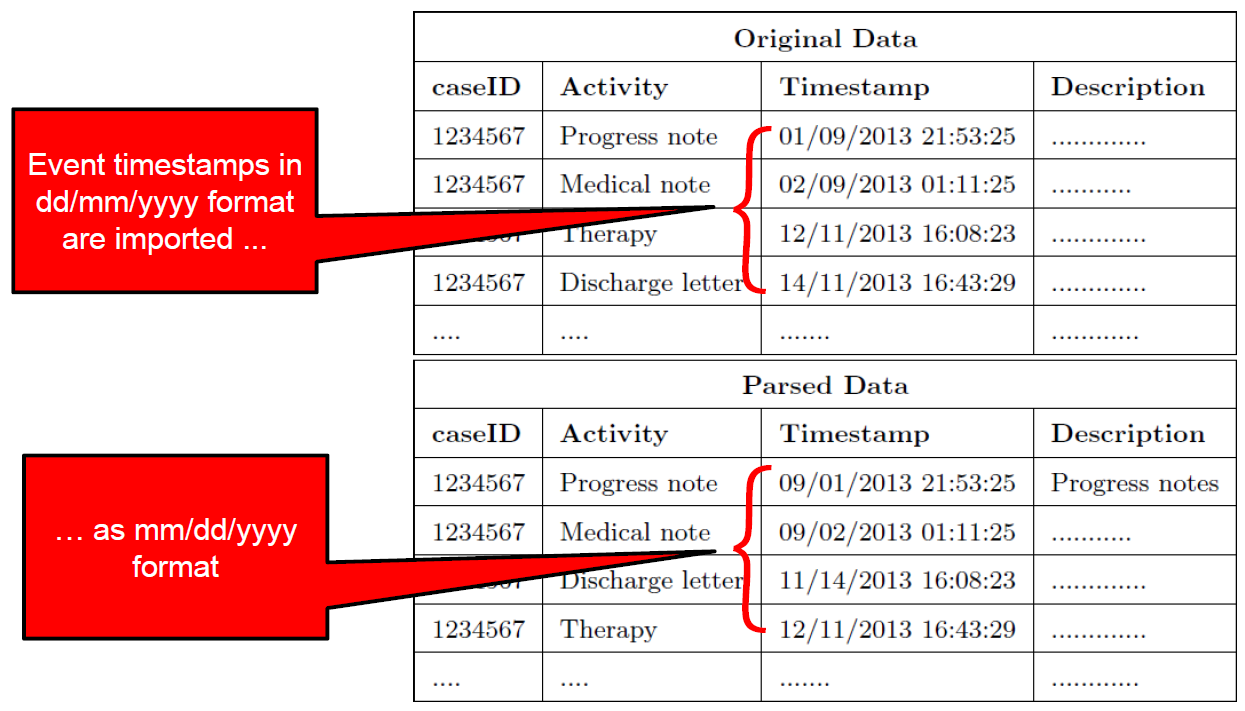Description |
- Here the timestamp values of an event log are recorded in a format different from that which is expected by the tools used to process the event log
- Consequently, the loading of the event log into those tools will result in incorrect interpretation of timestamp values
- Typical format variations include
- the confusion between month–date vs. date–month format
- the use of colon (:) symbol vs. the dot (.) symbol to separate between hour, minute, and second information
- and the varying manner in which time zone information is encoded
- This pattern is likely to occur when the event log is constructed from multiple sources
|
Affect |
- Incorrect timestamp values will adversely affect process mining results
- May output process models that are substantially different from reality in both event ordering and case duration
|
Data Quality Issues |
I23 - Imprecise data: timestamp
- The incorrect timestamp values introduced into an event log through the occurrence of this pattern negatively impacts the attribute accuracy of the log in that the temporal ordering of the events no longer reflects the actual ordering of events.
|
Manifestation and Detection |
 |
- Pattern signature — Unexpected range – timestamp element values outside expected range, e.g. ‘day’ values being only in the range [1..12] (possible indicating ‘month’ and ‘day’ elements being transposed)
- Pattern signature — Incorrect ordering – discovered process models have incorrect activity ordering
- Pattern signature — Incorrect intervals &ndash analysis reveals unexpected waiting, service, throughput etc. times
|
Remedy |
- Prevent tools from mis–interpreting timestamp fields
- Simplest solution: prevent tools to recognise certain fields as timestamp fields in the first place (e.g. by adding asterisks)
- This will then allow the use of string manipulation facilities to reformat timestamp data
|
Side-effects of Remedy |
- In practice, there could indeed be events that were executed in a sequence that did not meet the ‘expected’ ordering restrictions. Hence, this remedy may result in the loss of interesting deviant behaviours in the log.
|

